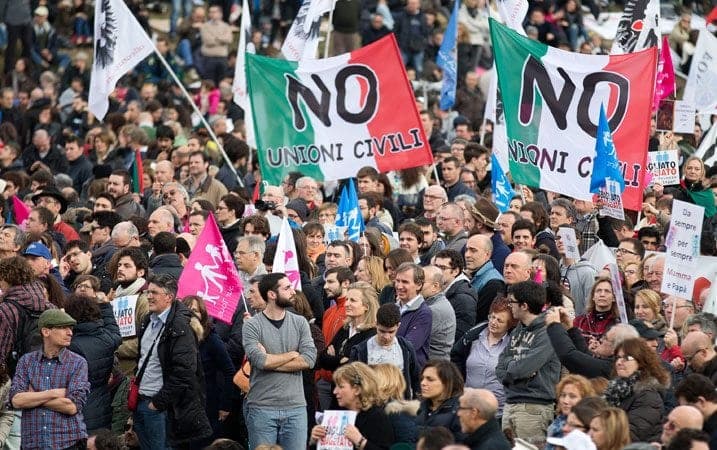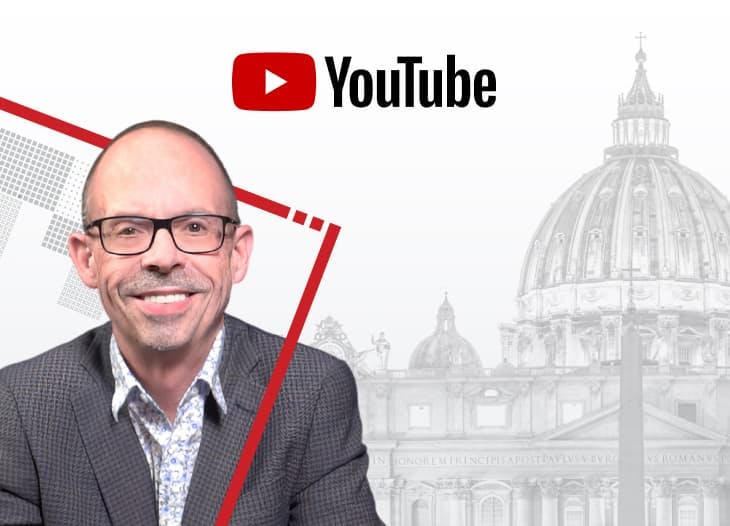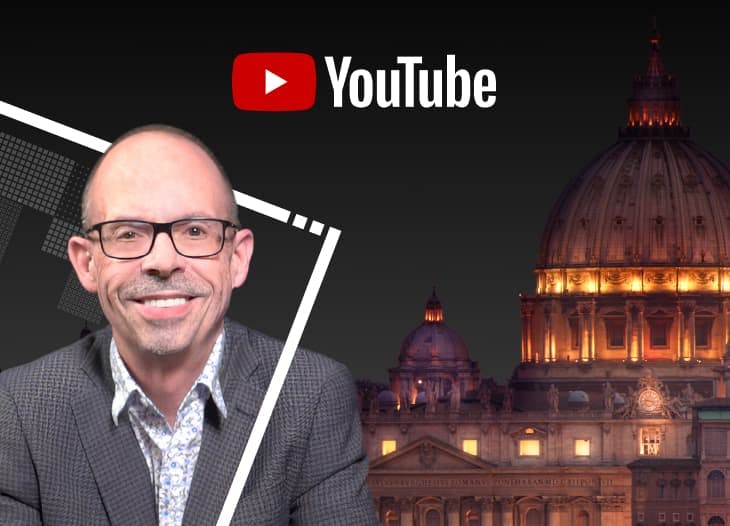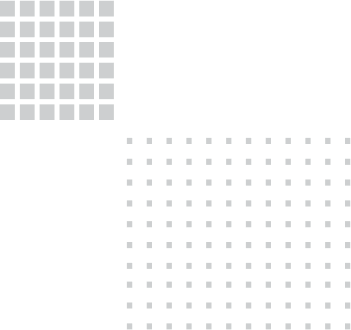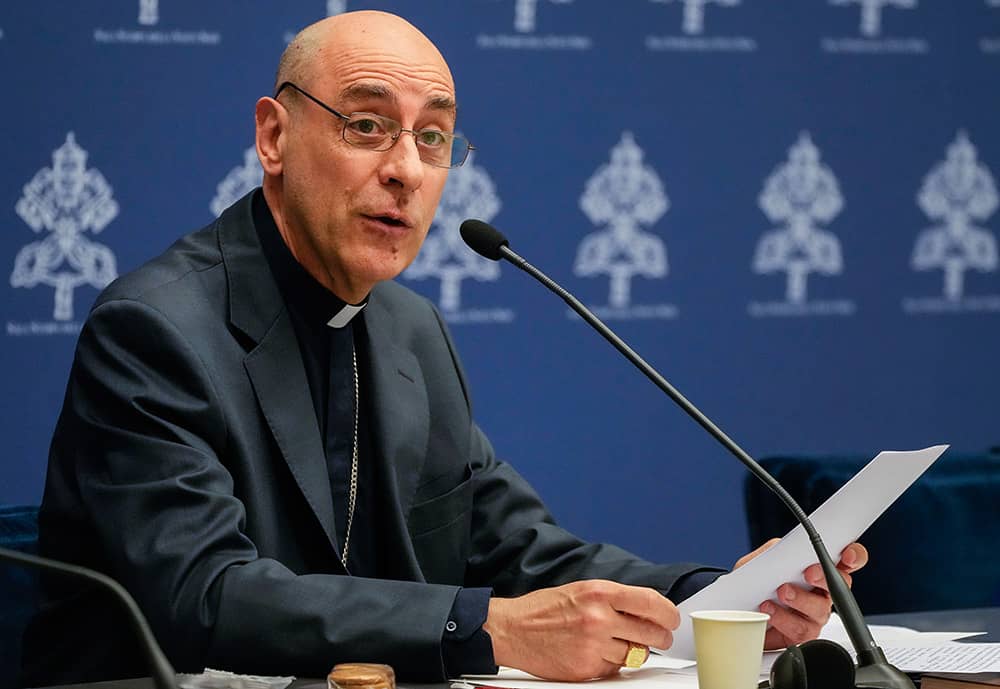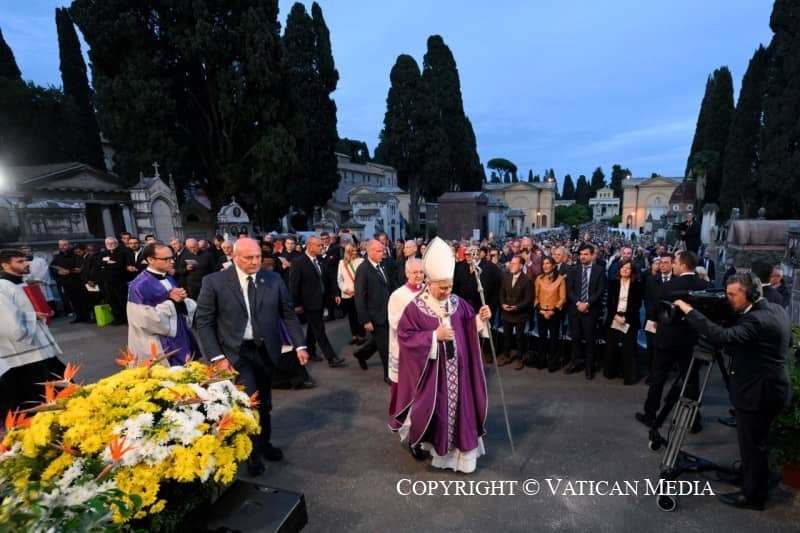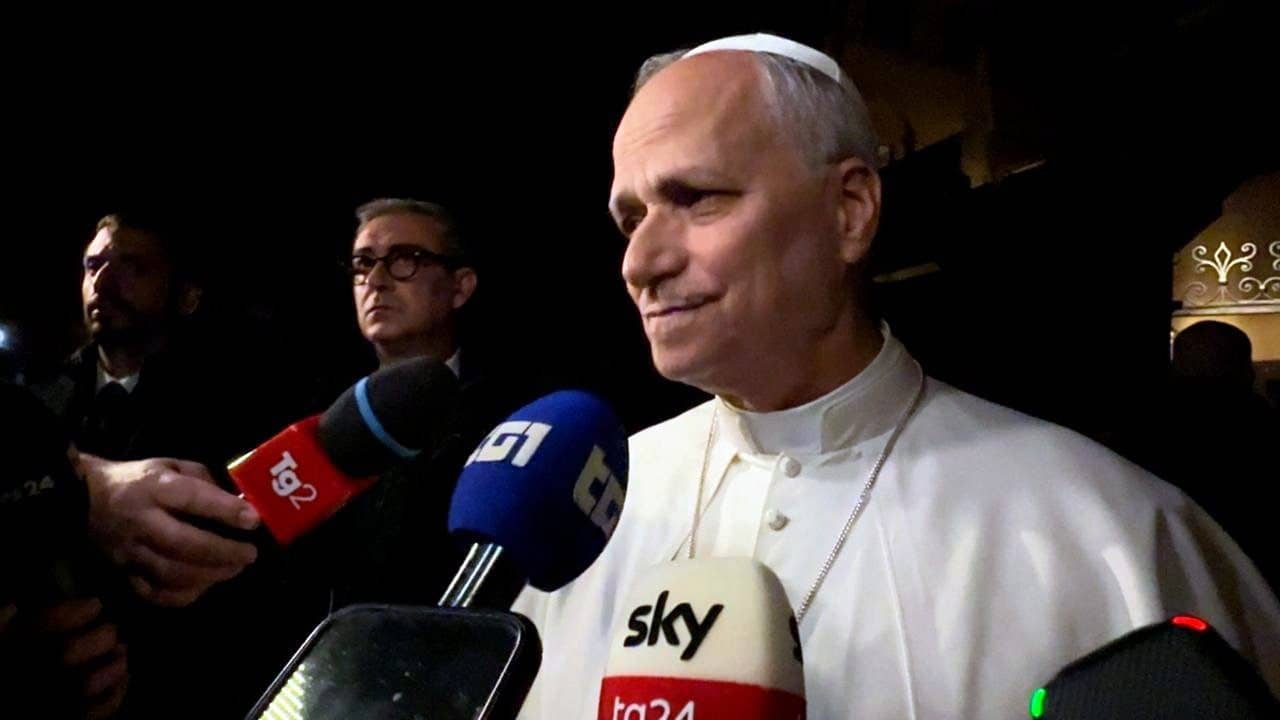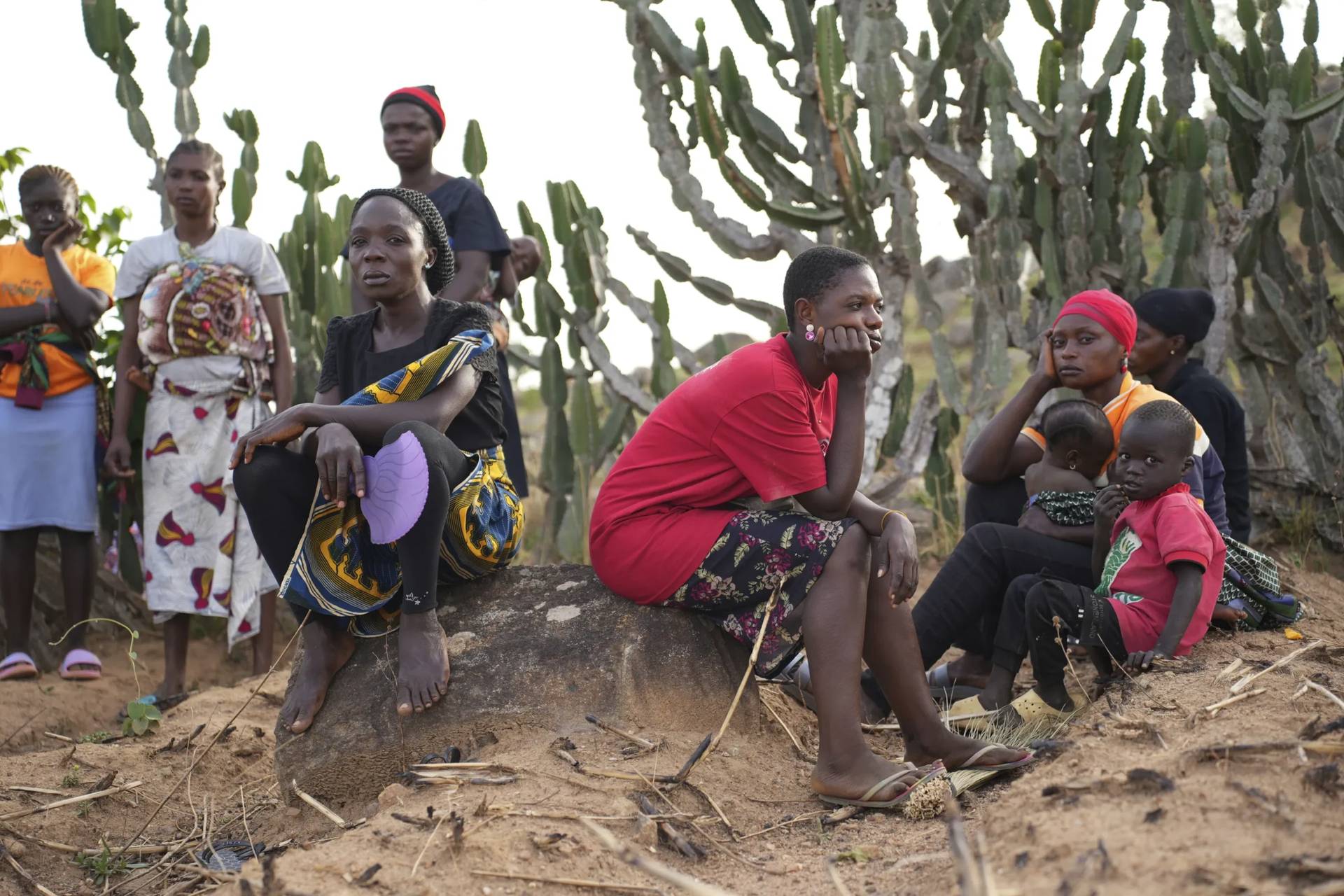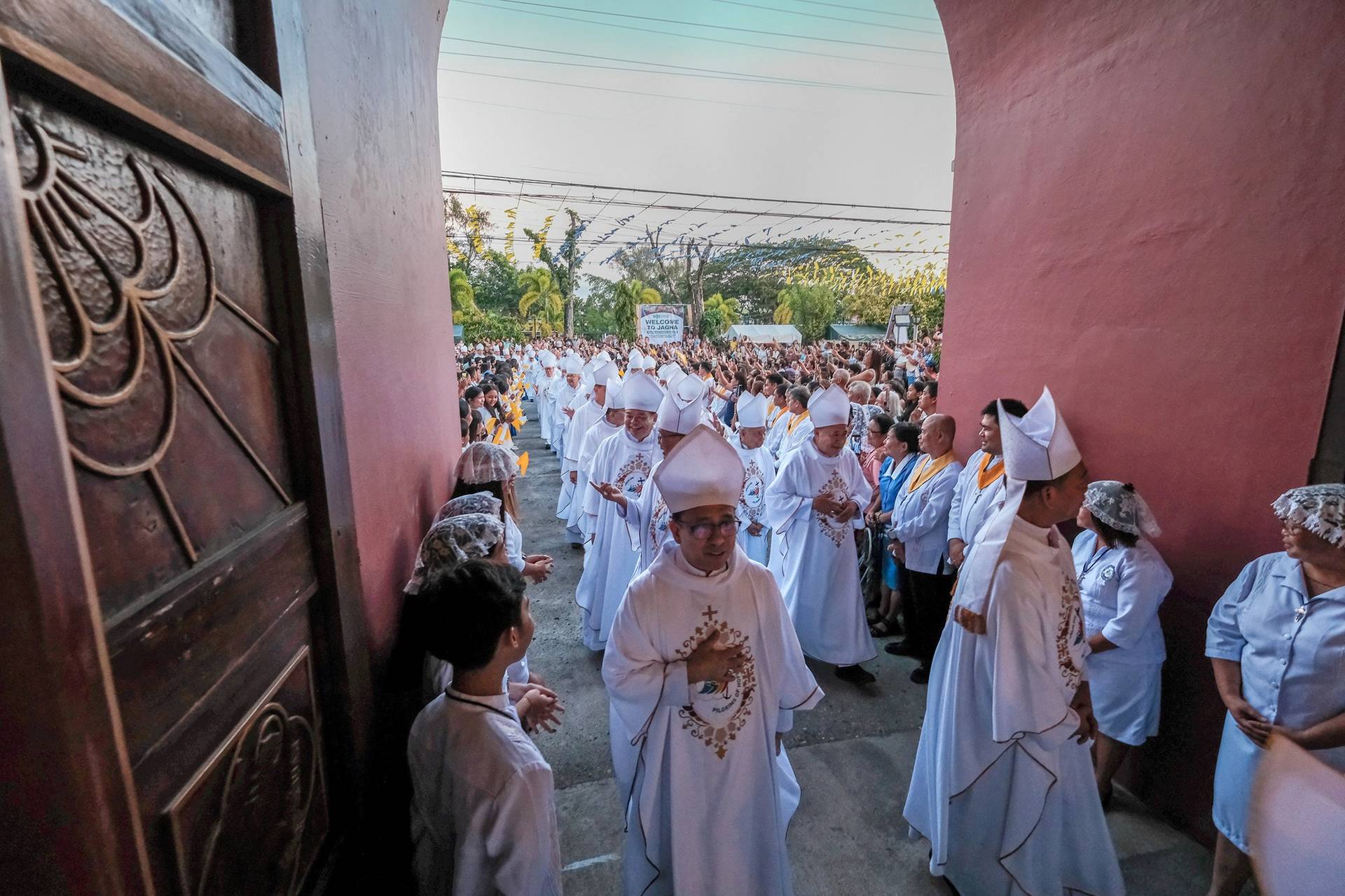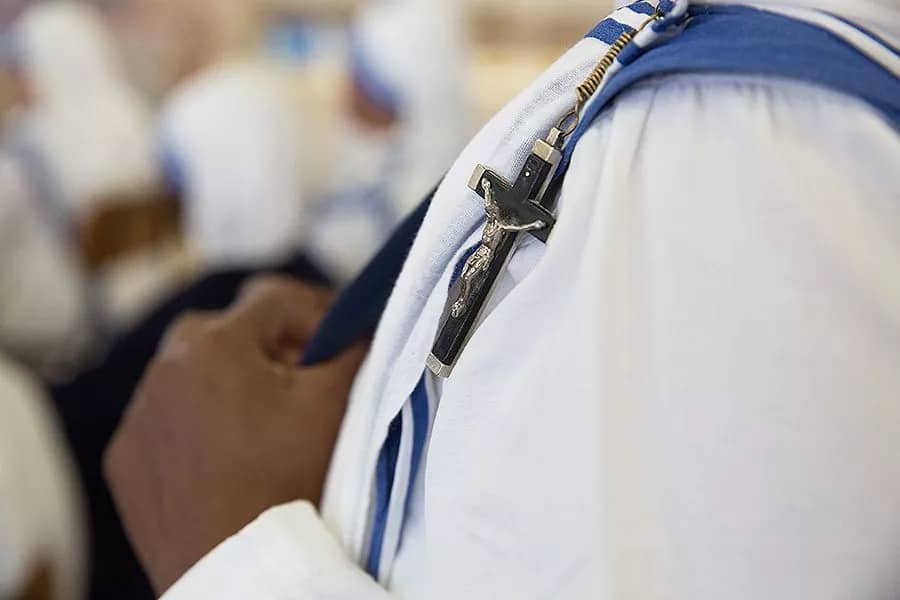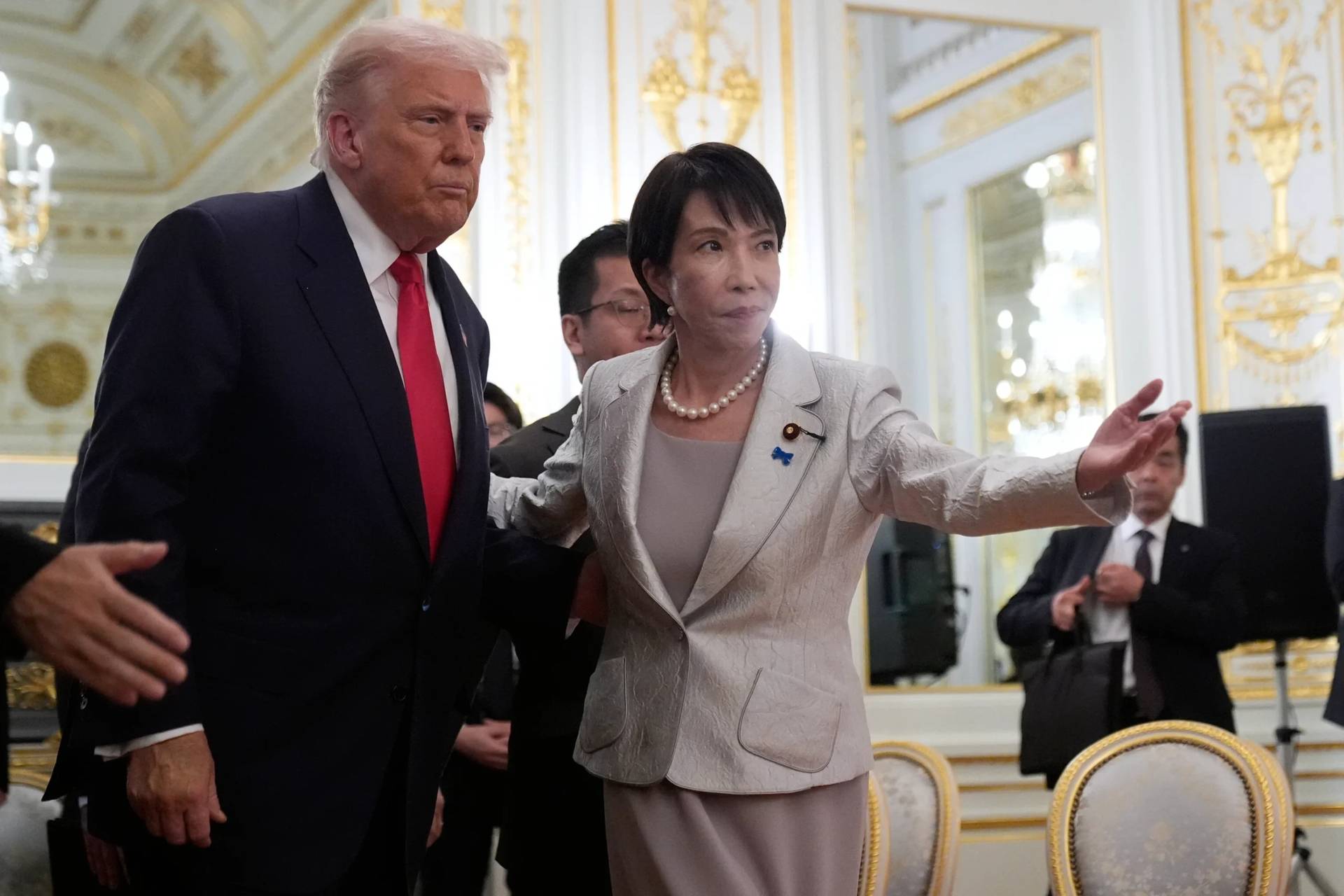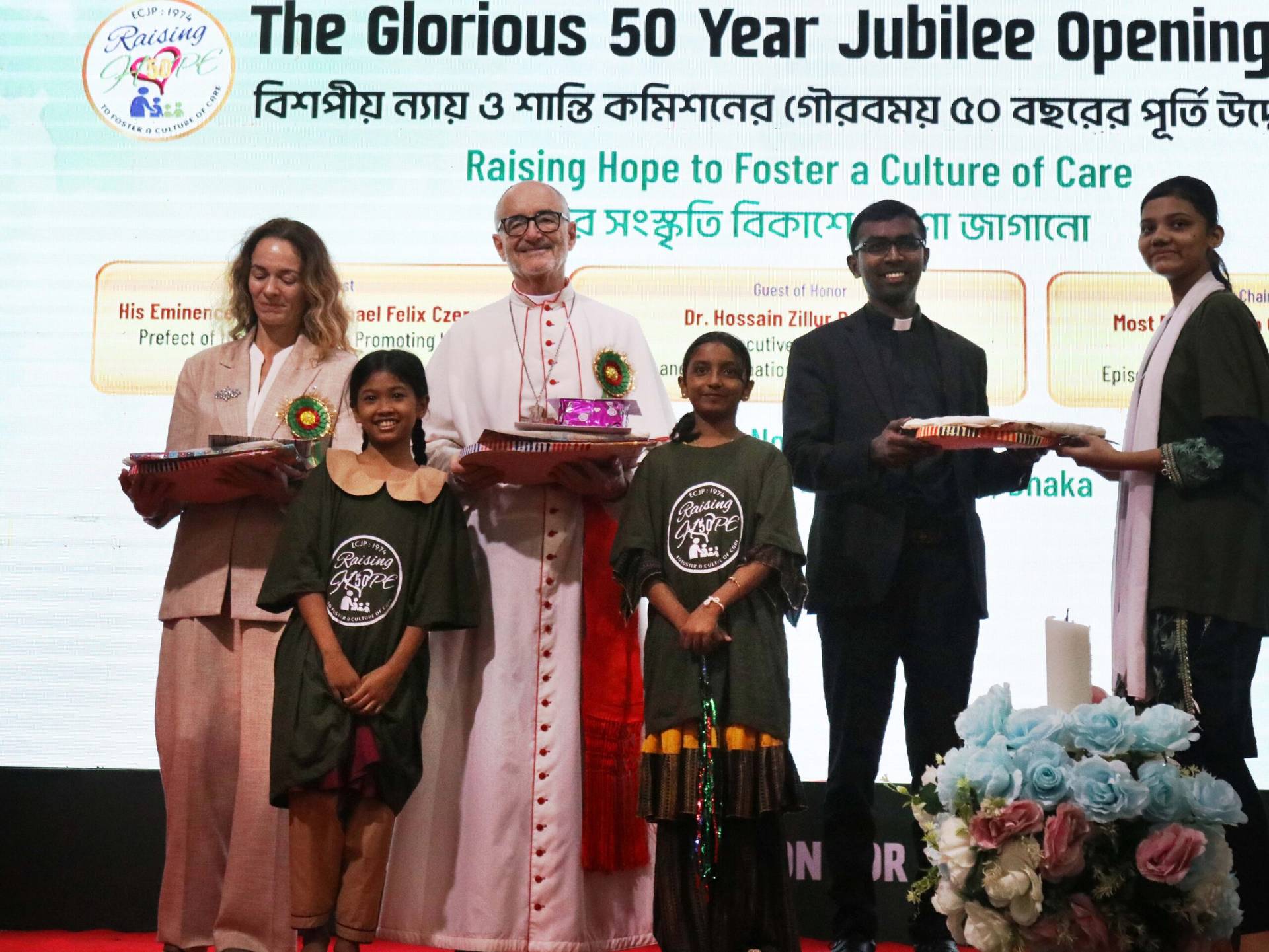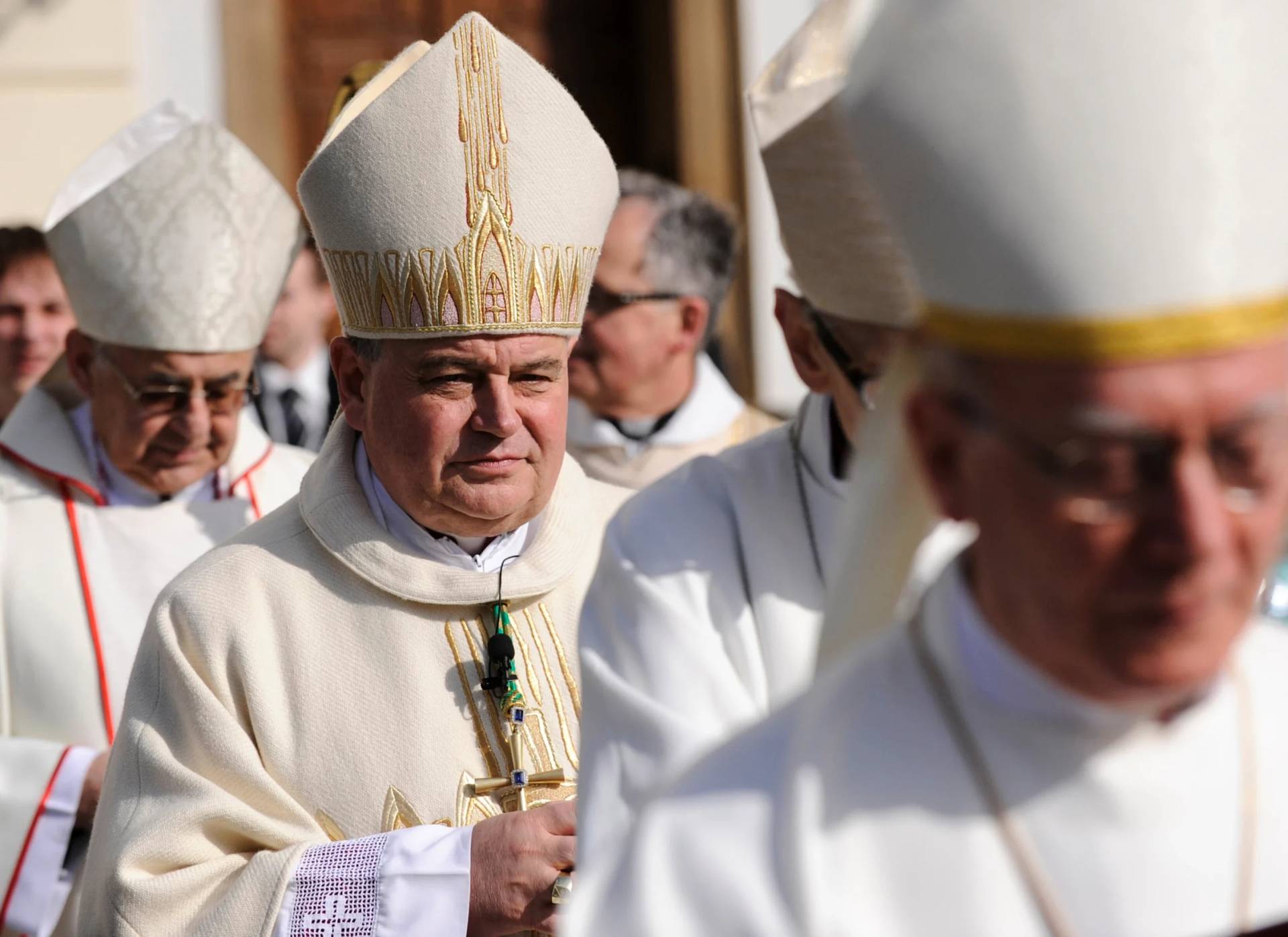On Saturday, a tidal wave of Italians, the vast majority of them lay Catholics, flooded Rome’s Circus Maximus to oppose a bill before parliament to create civil unions for gay couples and give them full adoption rights.
From the outside, it may seem like just another political protest, and thus attitudes probably will be driven by whether or not one agrees with the position it expressed.
Seen through a Catholic lens, however, there’s another way of viewing the gathering, which organizers called “Family Day”: It’s another stage in the Church’s maturation process, as the Catholic laity keeps growing up.
Here’s why.
In the run-up to the rally — estimated at 2 million people by organizers but just 300,000 by the Italian newspaper La Stampa — there was fevered speculation about what Pope Francis and the Italian Catholic bishops thought of the initiative: whether they backed it, whether they regarded it as too confrontational or intransigent, and who was on which side. Italian media attention to which bishops would show up, and which were encouraging their dioceses to do so, was almost obsessive.
Yet there was never any question that Family Day would happen, with or without an okay from the hierarchy.
Its chief organizer, a 64-year-old neurologist based in Brescia named Massimo Gandolfini, repeatedly cited a key phrase from Pope Francis in a much-discussed address to the Italian bishops last May, in which Francis rejected the idea that lay action should be dependent on “bishop-pilots.”
Laity, the pope said then, “who have an authentic Christian formation should not need a bishop-pilot, or a monsignor-pilot, or clerical input, in order to assume their proper responsibilities at all levels, from the political to the social, from the economic to the legislative!”
Gandolfini, who’s married with seven adopted children (one from Peru, two from Brazil and four Italians), candidly acknowledged in early January that he had fielded concerns from some bishops, not over the desirability of defending marriage and the family, but over strategy.
“We’re focused on having a direct impact, making our voice heard by Italians,” Gandolfini said.
“There are those who say one should work on education and formation … we’re talking about two complementary strategies, and we Catholic laity are moving forward without bishop-pilots, but in absolute certainty of being in line with the principles of the Church.”
In other words, no defiance, but no need for permission, either.
Gandolfini went to great lengths to stress the autonomous nature of the event. On Friday, veteran Italian Vatican-watcher Sandro Magister published a Jan. 26 note from Kiko Argüello, founder of the Neocatechumenal Way, to his followers, saying they should go to Family Day under their own steam rather than as representatives of the movement.
Argüello quoted from a letter he had received from Gandolfini: “No movement, association, group, party, committee and also no religious leader can or should be involved,” he wrote. “The rally must not have a confessional connotation of any type; it is not, not only, a Catholic gathering.”
Another veteran Italian writer, Marco Tosatti, put the situation as follows: “This group of laity forced the bishops to affirm that their action was ‘shareable.’ That’s not the repudiation someone might have wanted … but it’s certainly also not an enthusiastic approval.”
Not so long ago, above all in Italy, such a mobilization of lay Catholics without a clear green light from officialdom would have been hard to imagine.
When Italian laity first began organizing for political purposes after the fall of the Papal States in 1870, it made a string of pontiffs nervous. In 1904, for instance, St. Pius X suppressed a group called the Opera dei congressi because it bucked his wishes, and created one more to his liking called the Unione populare.
Pius X expressed the attitude of many a churchman of his generation when he said in 1906, “The one duty of the multitudes is to allow themselves to be led and, like a docile flock, to follow the shepherd.”
Eventually, the best-known form of lay organization came to be called “Catholic Action,” still the largest and most visible lay group in Italy. Pope Pius XI defined Catholic Action as “the participation of the laity in the apostolic mission of the hierarchy,” meaning it shouldn’t act without his blessing.
In effect, the only options for laity looking to express themselves in social and political life was submission to authority, or being disowned.
That stance began to dissolve under Pope Pius XII, and the Second Vatican Council (1962-65) called for a revival of the “lay apostolate.” Old habits die hard, however, and in some corners even today it’s considered untoward for lay groups to express a Catholic voice in public life without some sort of ecclesiastical patronage.
That’s what makes Family Day striking purely in ecclesiastical, as distinct from political, terms.
Even this vast gathering of lay Catholics, many of whom would probably satisfy conventional tests for being considered “conservative,” felt comfortable taking part in a public demonstration intended to express Catholic values as they understand them, without direction or unambiguous encouragement from the powers that be.
For Catholic laity everywhere — no matter which side they’re on in the debate over civil unions and gay rights — that degree of spunk, at least, should add another layer of interest to the Family Day story.
